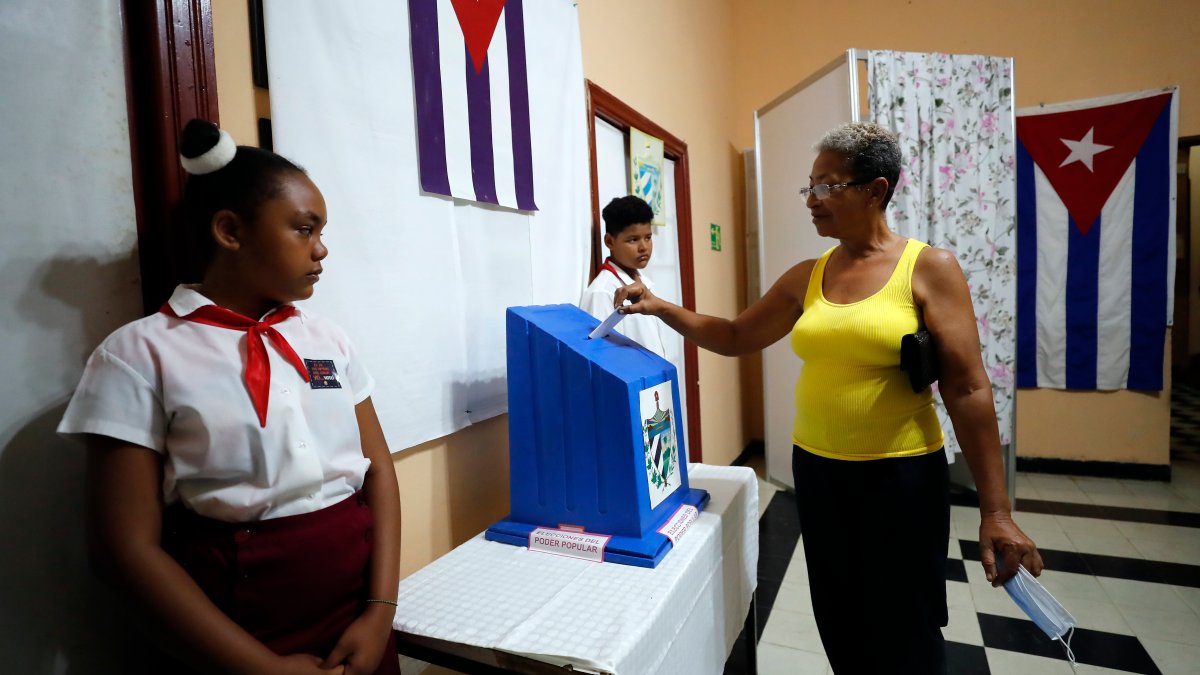Turnout in this Sunday’s legislative elections in Cuba amounted to 41.66% of the electoral census until 11 a.m., almost 4 points less than in 2018, reported the National Electoral Council (CEN ).
Specifically, it has fallen by 3.85 percentage points compared to what happened at the same time in the last elections to elect Parliament, in whose legislature the current Cuban President, Miguel Díaz-Canel, has was elected.
However, the percentage is slightly higher than that noted at this stage during the November municipal elections (3.17 points more) and than that of the September referendum on the Family Code (4.63 points more).
The secretary of the National Electoral Council, María Esther Bacallao, told a press conference that the day had passed “without major incidents that paralyzed the normal development of the process”.
More than 8.1 million people are called to the polls this Sunday, including 13,000 young people aged 16 who can exercise their right to vote for the first time.
Voters can go to one of the 23,648 polling stations set up in 12,427 constituencies between 7 a.m. and 6 p.m.
These elections are a key step in the country’s institutional renewal, which began with the local elections last November.
The process will culminate when the National Assembly of People’s Power, in one of its first decisions, appoints the country’s new president, a position that is expected to be held for a second term by Miguel Díaz-Canel, leader of the Communist Party. of Cuba (PCC), the only legal party.
A total of 470 candidates are running for an equal number of positions in the unicameral Cuban Legislative Assembly and voters may or may not support them.
Among them are historical figures of the revolution, such as former President Raúl Castro, 91, ministers, senior CCP officials, bureaucrats, musicians, scientists, intellectuals and business leaders. public.
Only those who have the support of more than 50% of the valid votes cast will be able to occupy their seat, in the last parliamentarians all obtained their position in the elections, if this does not happen, there are several legal provisions to fill these positions which may become vacant.
The candidates were selected by the so-called mass organizations, associations in the orbit of the CCP, and approved for the municipal assemblies of people’s power, where their militants are in the majority. Formally, neither the parties nor their youth nominate.
Almost all the candidates in these elections belong to the CCP or its youth, in the current National Assembly they represent 96.5% of the deputies, according to the website of the Cuban parliament.
THE IMPORTANCE OF WITHHOLDING
The Cuban government, the CCP and state institutions and media have in recent weeks urged citizens to vote en bloc for all the candidates proposed by each constituency.
From the opposition, inside and outside the island, abstention was advocated as a sign of rejection of the electoral formula in particular and of the Cuban political system in general.
After abstention figures below 10% between 1976 and 2013, the rate rose to 14% in the 2018 legislative elections, the last comparable elections held in Cuba.
The last two times that Cubans went to the polls were in the referendum on the Family Code last September, when abstention approached 26%, and in the municipal elections in November, when it rose to 31%, an all-time high.
According to experts, a high abstention rate would show problems of legitimacy because, unlike other political systems, Cuba’s is based on the collective, participation and unity.

